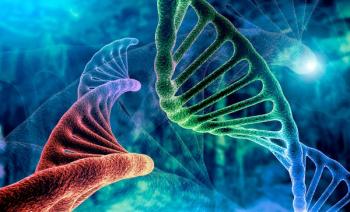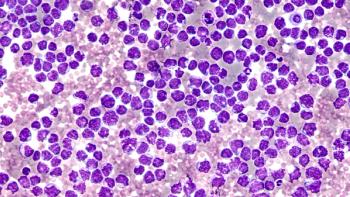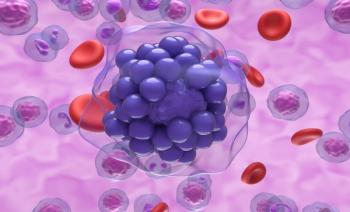
CAR T-Cell Therapy Holds Potential in SCLC, but Significant Barriers Remain
Key Takeaways
- CAR T-cell therapy shows promise for SCLC, but significant barriers, such as tumor heterogeneity and immunosuppression, must be addressed.
- Identifying tumor-selective antigens like CDH17, GD2, and PTK7 is crucial for effective CAR T-cell therapy in SCLC.
Early research has identified several antigens that could help facilitate the use of chimeric antigen receptor T cells in small cell lung cancer.
Chimeric antigen receptor (CAR) T-cell therapy could eventually play an important role in the treatment of
Numerous studies have investigated the potential of CAR T-cell therapy in the setting of SCLC in recent years, according to the review’s authors. They said the evidence from those studies suggests there is reason for cautious optimism. The report was
The authors noted that CAR T-cell therapy has become an important therapeutic option in some cancer types, namely hematologic tumors. In SCLC most of the research has been basic or preclinical in nature. The new article summarizes that research and also highlights some of the challenges holding back the use of CAR T-cell therapy in SCLC.
For CAR T to be an option, they noted, investigators first need to identify highly expressed, tumor-selective antigens with negligible normal-tissue expression that could be used in a CAR T-cell therapy. They also need to be able to engineer single-chain variable fragments (scFv’s) that can prevent on-target/off-tumor toxicity while still achieving the desired anti-tumor effects. A number of SCLC targets have been studied in recent years, including Cadherin 17 (CDH17), disialoganglioside GD2 (GD2), and protein tyrosine kinase 7 (PTK7). CDH17, for instance, is expressed at high levels in a variety of tumors, including SCLC. A study published in 2023
GD2 is also intriguing as an SCLC target, the authors noted, for multiple reasons. It has low expression in healthy cells, but high expression on the surface of certain tumor cells, they noted. Furthermore, GD2 CAR T cells
There is also evidence from mouse models that PTK7-directed CAR T cells may be effective against SCLC cells, though the investigators cautioned that potential side effects could not be evaluated in the animal-model
Significant progress has been made toward developing CAR T therapies for SCLC, but the authors explained that a number of challenges remain, including the highly heterogeneous nature of SCLC tumors and the immunosuppressive characteristics of the SCLC tumor microenvironment. Such features of SCLC may enable the tumor to evade CAR T cells.
The investigators said a number of strategies have been developed in an attempt to overcome such challenges, including the development of a universal CAR T-cell therapy designed to knock down PD-1. “This approach is expected to reduce the toxicity associated with systemic immune checkpoint inhibition and enhance tumor-killing capacity,” they said.
Combining CAR T cells with first-line therapies like immune checkpoint inhibitors may ultimately prove to be the best method of deployment for CAR T in SCLC.
The authors concluded by explaining that CAR T requires significant further study before it can become a meaningful part of SCLC therapy. However, they said there is sufficient existing evidence to support such continued research.
“With further basic research and clinical trials related to CAR T, there is reason to believe that CAR T-cell therapy will bring more hope to SCLC patients,” they wrote.
References
1. Zhang Q, Fu Q, Hou Y, Lv Y, Cao C, Li X. Advances in CAR-T therapy for small cell lung cancer. Int J Cancer. Published online August 18, 2025. doi:10.1002/ijc.70093
2. Tian W, Zhao J, Wang W. Targeting CDH17 with chimeric antigen receptor-redirected T cells in small cell lung cancer. Lung. 2023;201(5):489-497. doi:10.1007/s00408-023-00648-0
3. Heczey A, Louis CU, Savoldo B, et al. CAR T cells administered in combination with lymphodepletion and PD-1 inhibition to patients with neuroblastoma. Mol Ther. 2017;25(9):2214-2224. doi:10.1016/j.ymthe.2017.05.012
4. Cheng M, Ahmed M, Xu H, Cheung NK. Structural design of disialoganglioside GD2 and CD3-bispecific antibodies to redirect T cells for tumor therapy. Int J Cancer. 2015;136(2):476-486. doi:10.1002/ijc.29007
5. Jie Y, Liu G, Feng L, et al. PTK7-targeting CAR T-cells for the treatment of lung cancer and other malignancies. Front Immunol. 2021;12:665970. doi:10.3389/fimmu.2021.665970
Newsletter
Stay ahead of policy, cost, and value—subscribe to AJMC for expert insights at the intersection of clinical care and health economics.













































